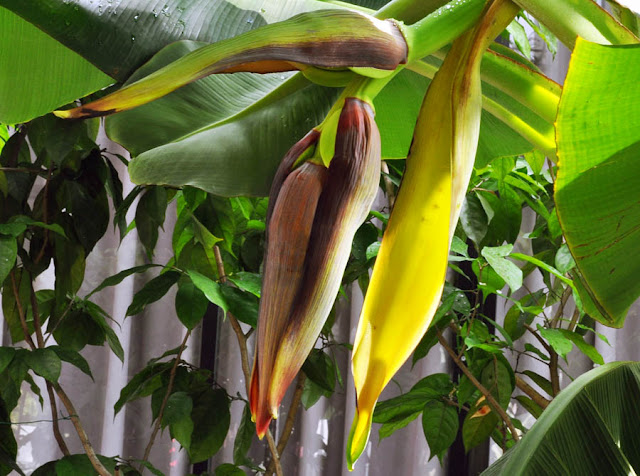Dwarf banana (Musa) trees, are most ideal in a small garden. In about four to six months, this variety will start to sprout flowers, followed by fruits when the trunk is about five feet tall.
The young fruits are covered by flap-like petals.
The shrivelled up flowers at the end of the fruits take some time to drop off.

I planted it for the fruits as well as the leaves which have many uses in Malaysian cuisine. The large fronds are beautiful and provide good shade.

I planted it for the fruits as well as the leaves which have many uses in Malaysian cuisine. The large fronds are beautiful and provide good shade.
This whole bunch of fruits is heavy and need support to hold it up. I used old broomsticks to buttress the fruit stalk.
This is part of the harvest. The rest were given away to neighbours and friends.
The eating experience can be enhanced with fruit yogurt, a sprinkle of toasted sunflower seeds, and a drizzle of Bailey's cream.
Prawn otak-otak.
A dish of prawns, lemon grass, kaffir lime leaves, coconut milk, chillies, onions, garlic, wrapped in banana leaf and steamed.
The otak-otak is yummy eaten straight from the banana leaf. It also made a delicious savoury spread on toast.
Chay kwai teow is one of Malaysia's favourite dish. It is a dish of fried flat rice noodles, bean sprouts, chives and cockles. Serving it on a piece of banana leaf enhances the eating experience.

A delicious custard with sweet corn kernels, java flour and coconut milk (santan).
The cooked custard mixture is wrapped in scalded banana leaf and chilled. The blue pea flower, Ternatea Clitorea is often used as a food dye.










































